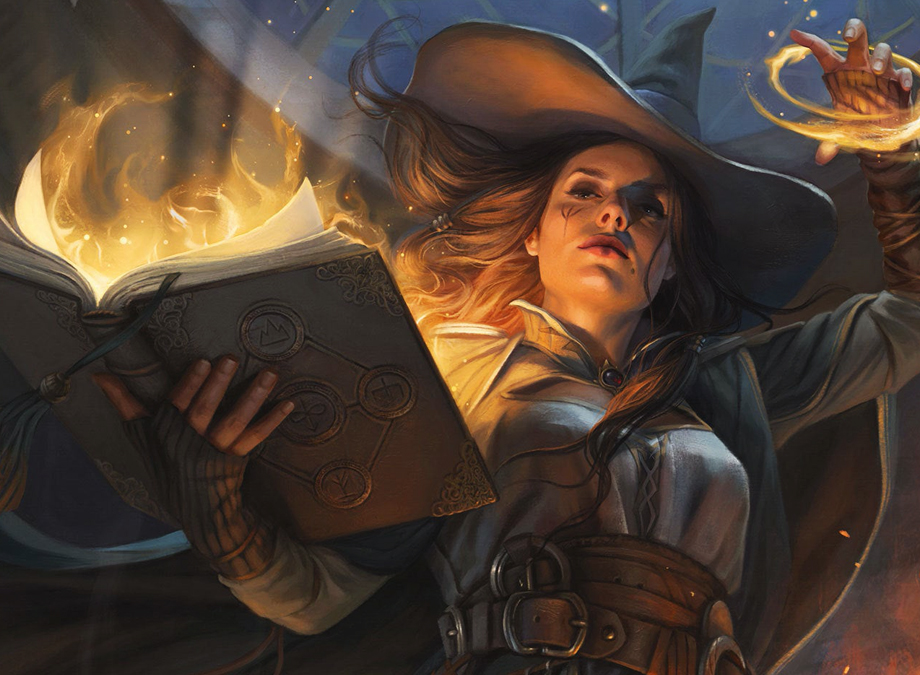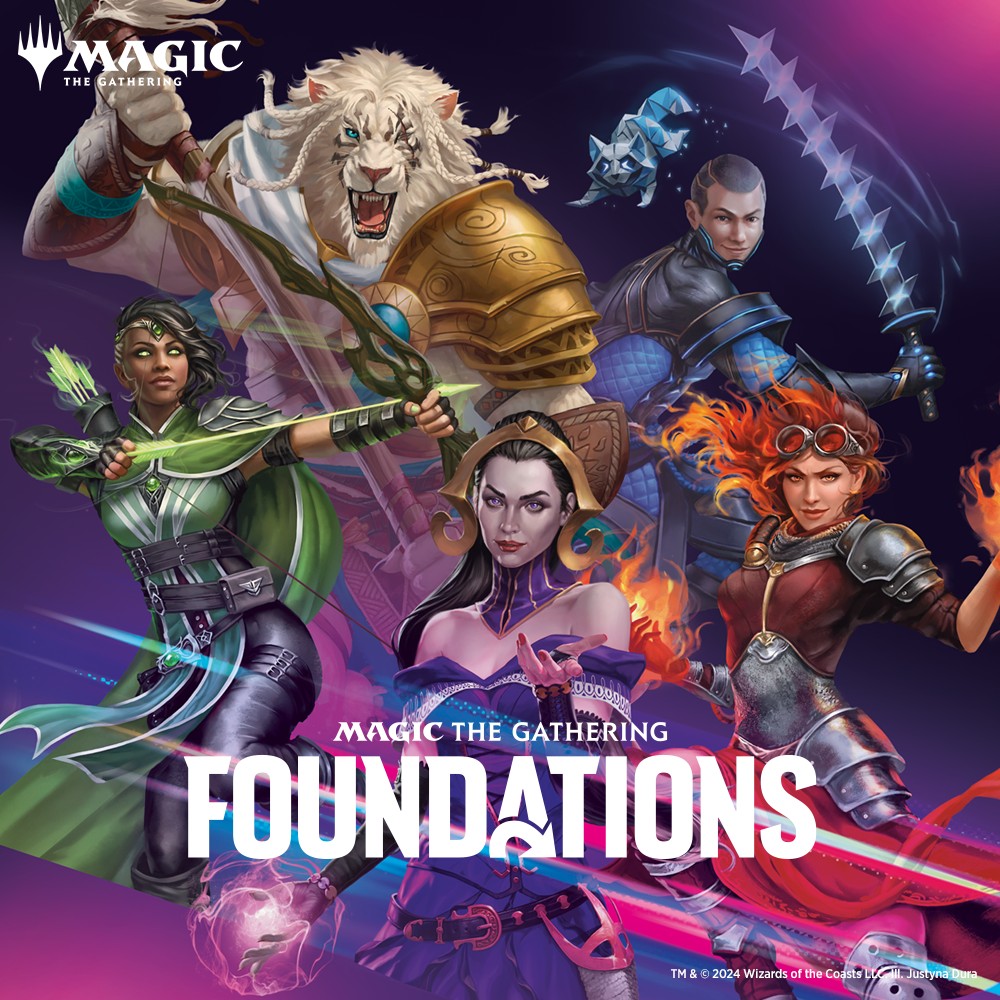The release of Tasha’s Cauldron of Everything in November of 2020 left many questions. Chief among them, “Tasha? Wait, like the Hideous Laughter Tasha?” and the less common “What’s up with the cauldron?”
Well my dear readers, yes, like the Hideous Laughter Tasha.
The Hideous Laughter Tasha, in fact, and in terms of her having a cauldron… well, she’s a witch!
But given that her name adorns the title of a book, you may have already come to suspect that the story of Tasha is a little more complicated than your run of the mill witch. Which is exactly why I, your faithful Loremaster, am here to unravel it. It's a story of three characters merged into a single being. A story found tangled and knotted through the very fabric of multiple settings, spread across decades of Dungeons and Dragoning.
And like any story, the easiest place to start is at the very beginning.
Tasha’s Origins
It's always been the way of D&D to bleed into the real world in some way, shape, or form. Whether it be The Shadow who harrowed the titular Gamers of the same-named trilogy of films, Acquisitions Incorporated adventuring through Wizards of the Coast’s offices, or naming spells after fans or players.
That last one is incidentally how Tasha’s namesake spell came to be. Back in the ancient days of lore, before adventurers had stepped into a third edition, let alone a fifth, a little girl named Tasha wrote D&D co-creator Gary Gygax fan letters in crayon and in turn he named a laughter-based spell after her.
But in Tasha’s case, the thread connecting Dungeons and Dragons to our Earth runs far deeper than just a name.
While Tasha’s true origins remain a mystery, we do know that she was the adoptive daughter of Baba Yaga. The Baba Yaga, specifically.
Not to be confused with Baba Lysaga of Strahd fame, Baba Yaga is a character from Slavic folklore. Sometimes represented as a single supernatural woman, othertimes representeed as a trio, Baba Yaga is always seen to eat children and travel in a house with bird legs.
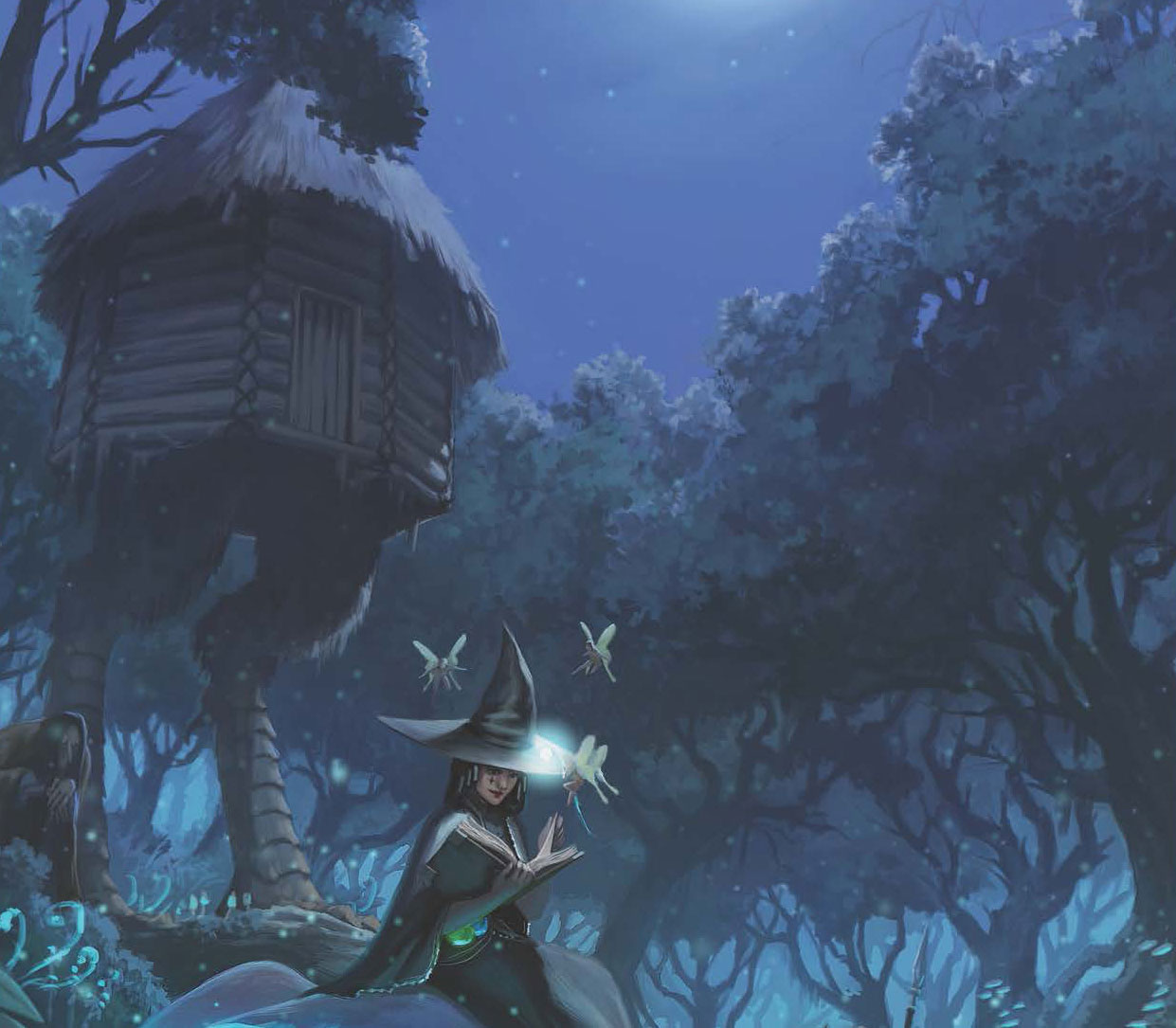
When your house has legs, you can staycation anywhere.
She appears in a number of fairy tales, such as the tale of a young girl named Natasha. In this story, Natasha's scheming steep-mother sends her to the witch's hut, but the girl manages to outwit and escape from the witch thanks to the kindness she displays to Baba Yaga’s servants.
Is this the same Tasha? We may never know. However, to quote Lead Rules Designer for Dungeons and Dragons Jeremy Crawford, ”There is a non-zero chance that Tasha has come from Earth.”
Delving back into what we do know, Tasha’s connection with Baba Yaga has been hinted at since March 1984, when an adventure module featuring Baba Yaga’s hut was published in Dragon Magazine issue 83. In this module, The Dancing Hut, adventurers can find one Natasha the Dark while wandering through Baba Yaga’s home, encountering her chambers and potentially the witch herself as a combat encounter.
In this same adventure we met Tasha’s adoptive sister, Elena the Fair. While Tasha was jealous of her, per this module, oppositely aligned sister, she has never harmed Elena.
However, that is but one of Tasha’s many names, and as such her story can be difficult to parse chronologically. But as your faithful Loremaster, I shall do my best to lay the tale out so that my chronology-bound readers can comprehend.
While exactly when is unclear, Tasha was adopted at a young age by Baba Yaga herself. She would spend her childhood and earlier years traveling from realm to realm, including a healthy amount of time in the Feywilds.
Or unhealthy, depending on your take on “time-warping mushrooms, mind-bending fruit, and giant tabby cats”. Though, given that her proximity to the fey and her adoptive mother’s power may have also contributed to her unnaturally long life and youthful appearance throughout it, it’s difficult to say for certain.
Greyhawk
From there Tasha would make her way to Oerth, the realm of Greyhawk. She first appeared in the nation of Ket where she took the name Hura. Under this pseudonym she raided the vault of hero-deity Daoud, presumably acquiring the artifact Daoud’s Wondrous Lanthorn in the process. This artifact, a jeweled lamp known to curse its owner with paranoia, later appeared in Tasha’s horde during the difficult to pronounce Gygax adventure, The Lost Caverns of Tsojcanth.
The aftermath of this raid forces her into exile from the nation, but does not deter her. From Ket she traveled to the setting’s titular Free City of Greyhawk under the name of Tasha. Her new name chosen, Tasha would soon become the apprentice of future-mad-god Zagyg, then Archmage Zagig Yragrene. Given that Zagig was also the reported founder of the famed Greyhawk adventuring party The Company of Seven, it should be no surprise that Tasha was amongst their ranks as well.
At this time, Tasha adventured across planes with famous names like Heward, of the wondrous Handy Haversack, Nolzur, who’s name now presents a line of miniatures, and Murlynd, an actual cowboy who wielded holy revolvers.
I am not making that up.
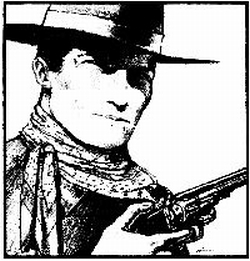
He's a paladin. Can't you tell?
Murlynd as depicted in Dragon #71
On one adventure, the Company discovered a tome of demonic lore known as the Tome of Zyx. Utilizing the tome, Zagig and Tasha imprisoned the demon lord Fraz-Urb'luu beneath Castle Greyhawk.
But Tasha’s interests sometimes led her against those of her supposed master and party members. Despite having sealed him away with her supposed master Zagig, Tasha contacted Fraz-Urb'luu in his prison. From him, Tasha learned abyssal secrets and soon absconded with a number of Zagig’s magical tomes. Among these books was the Tome of Zyx, which still had a large role to play in Tasha’s story.
Tome in hand, Tasha retreated to the Yatil Mountains, where she took on a new persona: Archmage Iggwilv. There, she summoned and enslaved the half-demon mage Tsojcanth, transforming his cavern resting place into her home.
She would use the knowledge she had accumulated to summon another demon lord, Graz’zt, whom she subsequently bound and seduced. Tasha used him as she used so many others. She gleamed knowledge of the Abyss from him and added it to the Tome of Zyx. This revised tome has since as many names as its author: The Nethertome, the Fiendonomicon, and most famously, Iggwilv’s Demonomicon.
Into this book, Tasha poured the knowledge she had of the demons: their names, their abilities, and the categories that the chaotic evil fiends fell into. Tasha may have even placed a piece of the Abyss itself into the Demonomicon. But even without it, the tome grants its wielders great power over demons. In turn, Tasha became a hated enemy of the Abyss as such chaotic creatures detested the order such a book represented.
Knowledge was not the only thing that Tasha gained from Graz’zt however, as the demon lord also gave her a cloak of pit fiend hide known as the Fiend’s Embrace, and perhaps more importantly to the history of Oerth, a demigod son named Iuz who would cause his own share of strife throughout the world.
As for Tasha, she spent time building an army and fell upon the nation of Perrenland, ruling over her new domain as witch-queen. Incidentally, this makes her a possible candidate for a patron as per the rules within Tasha’s Cauldron of Everything. In this time that Tasha had another child, the vampiress Drelnza, though her father remains unknown.
Decline and Defeats
Her reign would not last long.
A decade into her rule, Tasha had grown alarmed by a spread of the Abyss beneath her home base. Graz’zt, sensing a chance to escape, maliciously suggested a plan of action. Using necromancy, Graz'zt said that she could turn the enslaved mage Tsojcanth into a living seal for the abyssal power. Tasha accepted his advice, only to immediately regret her choice. To her shock, her fiendish servant retaliated. It was the first time Tsojcanth fought back since he was enslaved. At the same time, the demon lord made his own attack on her bindings, breaking free.
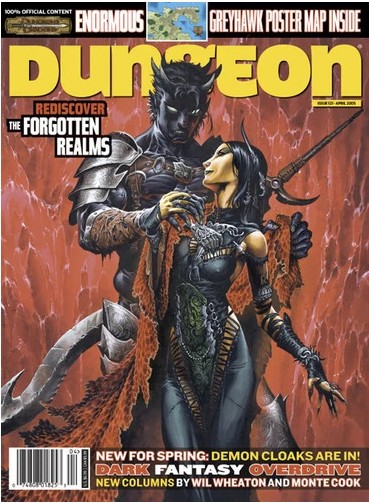
Never trust a demon, especially if he gives you a sweet cape.
Cover of Dungeon #121
The battle that ensued was so destructive that rumours stated Tasha had died in the encounter. In truth, she had managed to slay Graz’zt’s material form and banish him back to the Abyss. However, in the process her own body was wracked with magic so damaging that it split her into two hideous forms.
And in turn, it left her control over Perrenland weak. Thus paving the way for a revolution which shattered her rule and scattered her followers.
But while this event saw Tasha’s disappearance from the world for 80 years, it was not the end of her. Since then she has clashed with the Circle of Eight, a group of adventurers which Tasha’s frenemy Mordenkainen founded.
In The Lost Caverns of Tsojcanth, her daughter Drelnza was slain by adventurers dispatched by The Circle of Eight. She appeared opposite the Circle again while attempting to summon fiends to the world in the module Isle of the Ape. Her reasons for this plot were her own, though it may have potentially been to avenge her daughter. In the end, the Circle sends adventurers (the party) to foil her plans and retrieve the magical artifact the Crook of Rau.
Tasha’s final conflict with the Circle of Eight occurred on Luna, the greater moon of the Greyhawk setting. There, in Iggwilv's secret lunar base, adventurers aiding the remainder of the Circle battled her forces. In the end, the adventurers prevented her demonic army from conquering the realm in the module, Return of the Eight.
Ok, fighting an army of demons on the moon? Why did no one tell me how hardcore Greyhawk is?
Following this final defeat, Tasha departs to a manor in the Grey Wastes of Hades, the plane of neutral evil. Those who remain there slowly find their will to leave eaten away. Perhaps that is the fate that awaits Tasha, though that seems... unlikely. For now, her plans are unknown. However, she still makes her presence known such as in the Points of Light setting of 4th Edition. And, of course, has more recently released a new book in accordance with Mordenkainen.
Villain?
But one point of contention that remains is the true nature of Tasha.
For her acts, Tasha was labeled a villain, and in-system is often portrayed as such. Particularly, Return of the Eight recommends her as a background villain who troubles the party from behind the scenes.
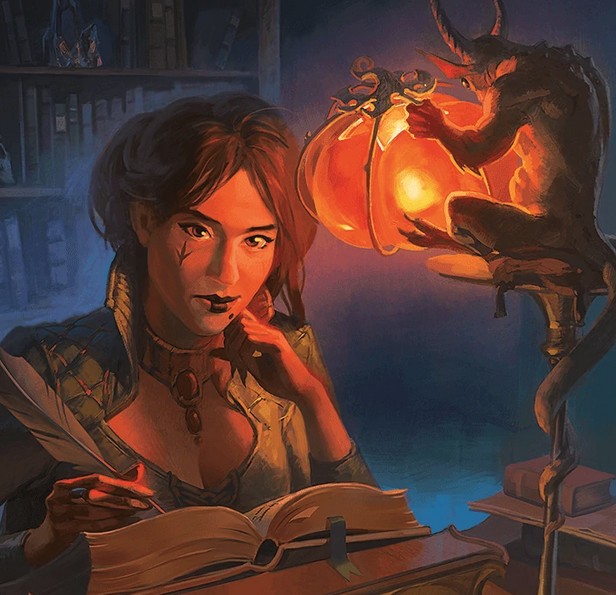
And really who but a villain would tattoo an upside-down chicken foot under their eye?
Tasha as seen in Tasha's Cauldron of Everything.
However others, particularly Jeremy Crawford, take a different approach to her true nature. They paint her alignment as more mercurial. Something that can change from day to day depending on what her goals are. It's important to note that such a mindset was not uncommon in earlier editions. In fact, adventurers themselves could not be assumed to be heroic in those days - or even good. A mindset that Isle of the Ape demonstrates particularly well, as daemons will try to recruit the party should they prove villainous enough.
And given that these adventure modules were based off Gygax's own campaigns, they can be viewed as... unreliable. At least, according to Crawford.
The fact that Tasha devoted so many of her years to crafting a book that could be used as a weapon against the forces of the Abyss, earning her demon lords as enemies, adds to this more complicated view of the Witch Queen.
In the end though, the true nature of Tasha - should she appear in your campaign - is up to the real power behind the scenes: The DM. And if your DM wants a word of advice from Tasha, her knowledge can be found in Tasha’s Cauldron of Everything, available online at the Wizard's Tower.
One Last Thing
But before we bid adieu for today, Tasha’s story meets with Earth again. This time perhaps not in the way you might anticipate, and certainly not in the same genre of media. In Madison, Wisconsin, a programmer by the name of John Carmack was running a D&D campaign for his coworkers at Id Software, makers of Wolfenstein. A campaign which ended in a flood of demons overrunning the material plane. A flood of demons triggered by the trade of a book called the Demonicron to the forces of the Abyss for a powerful sword named the Daikatana.
If "Demonicron" sounds familiar, yes, it's likely that Carmack found inspiration in the Demonomicon of Iggwilv. And the flood of demons? Well that inspired a little title called Doom.
Funny the way that real life and fantasy ripple across one another, isn’t it?

